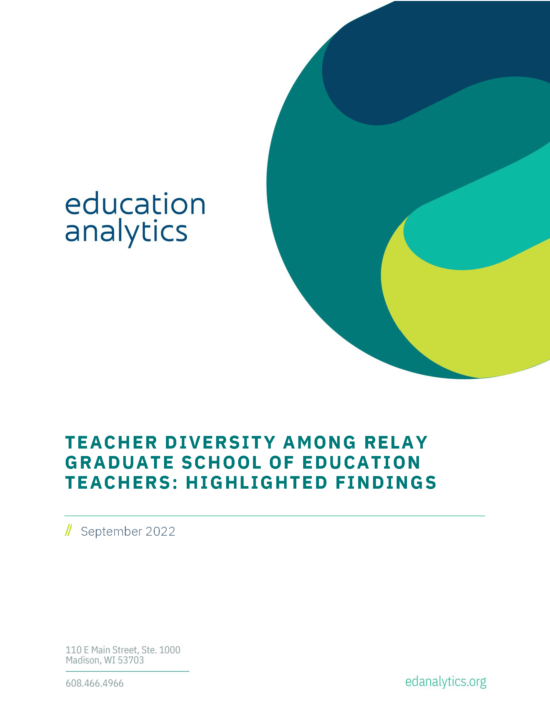Teacher Diversity Among Relay Graduate School of Education Teachers: Highlighted Findings
There is a significant mismatch between the ethnic and racial composition of the K–12 public school teacher workforce and the students it serves. For example, in 2017-18, about 16% of U.S. public school teachers were Hispanic or Black, compared to 42% of students. In New York City, the demographic similarity between teachers and students is greater than the national average, but there is still a substantial mismatch. Specifically, although 63% of the student body is either Hispanic or Black, only 32% of the New York City teacher workforce is Hispanic or Black. Mismatches in race and ethnicity between teachers and students have been shown to affect student outcomes such as student achievement, student absences and suspensions, and high school graduation, and this mismatch can even have long-term effects on students’ future career earnings. Reducing mismatches may therefore be a promising strategy for improving outcomes for students of color. Yet, high-quality examples of policy interventions with this aim are limited.
Non-traditional educator preparation programs, such as the Relay Graduate School of Education, may be an effective way to introduce more teachers of color into the teacher supply pipeline. Here, we report evidence using data from the New York City Department of Education to address three research questions related to reducing racial and ethnic mismatch between students and teachers:
- Are teachers trained by the Relay program more racially and ethnically diverse than other novice New York City teachers?
- Are students of color more likely to take courses taught by teachers of the same race when teachers are trained by Relay?
- Are teacher-student racial matching effects larger among Relay teachers than other novice New York City teachers?
